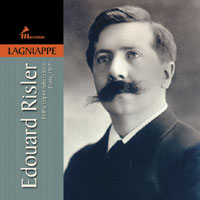Liner Notes
Edouard Risler was born in Baden-Baden on 23 February 1873 and was one of the first modern pianists to specialize in cycles of one composer’s output in a single concert series. He toured throughout Europe playing Beethoven’s 32 sonatas, Chopin’s complete works, etc. He was also the dedicatee of Paul Dukas’s gigantic piano sonata, which Risler premiered in 1901.
Risler studied at the Paris Conservatoire, first with Emile Descombes (a disciple of Chopin), then under Louis Diémer, winning prizes in harmony and piano. He also studied in Germany with Bernhard Stavenhagen and Eugen d’Albert, both pupils of Liszt. He made his Paris and London debuts in 1894, performed at Bayreuth in 1896–97, and was appointed a member of the Conseil Supérieur of the Paris Conservatoire in 1906. Among his numerous pupils there were Gaby Casadesus, Alfred Cortot (briefly), and Jacques Février. Risler died on 22 July 1929 in Paris.
The combination of French and German influences gave Risler’s pianism an impressive degree of musical depth and expressiveness, allied to an extraordinarily fluent command of the instrument. His only recordings were produced in 1917 by Pathé; original copies are exceedingly rare. Assembling a complete set in good sound is a feat whose result is worth sharing.
A Note from Ward Marston
These eighteen sides of Edouard Risler are the only examples of this pianist’s exquisite artistry. Sadly, they are among the poorest sounding piano records ever made. I urge the listener to look past the high level of surface noise and give these recordings the consideration they justly deserve.
The poor sound quality of these records is directly due to the Pathé’s recording process: the master recording was cut on to a large wax cylinder and then pantographically rerecorded to disc. Although the master cylinders were probably excellent, the resulting discs had uneven results ranging from acceptable to execrable. In fact, two identical Pathé discs of the same recording may sound quite different since they may have been pressed from two different transfers of the master cylinder.
The Risler Pathés are extremely scarce and I was most fortunate to locate several copies of each disc. The principle flaw in these recordings is the remoteness of the piano sound and the heavy surface noise. In remastering, I have made every effort to bring the piano as forward as I can, I have applied a slight amount of digital de-noising during quiet moments, and I have used several styli for different portions of each side.

Edouard Risler: Pathé Paper-label discs
Paris, 1917